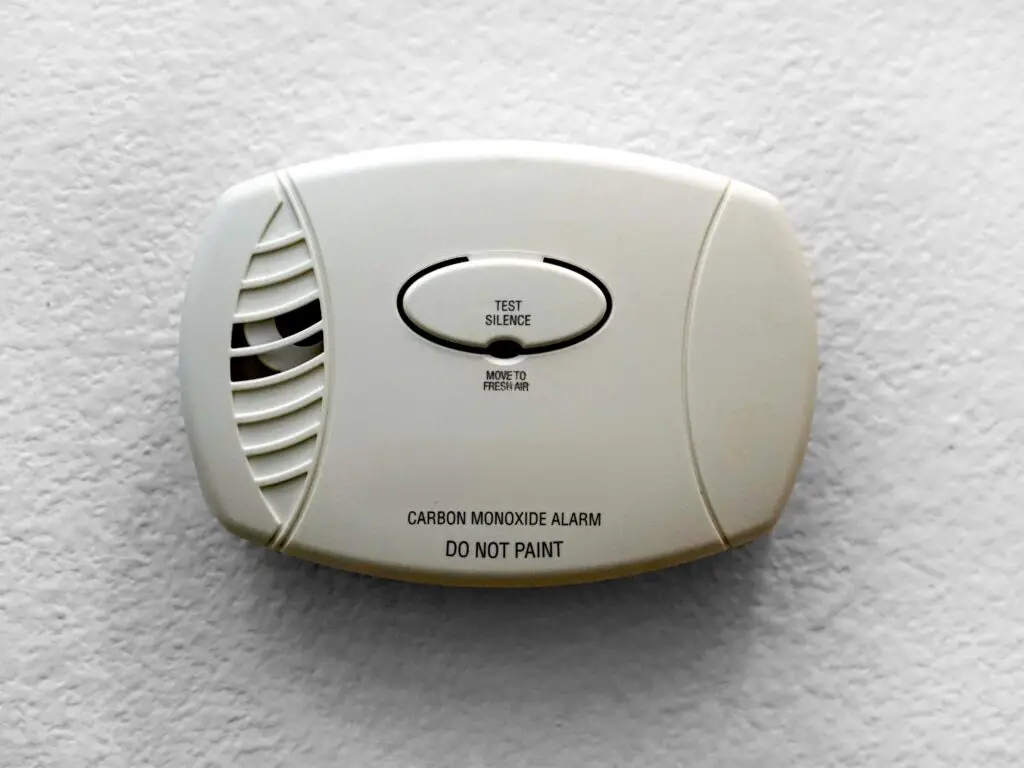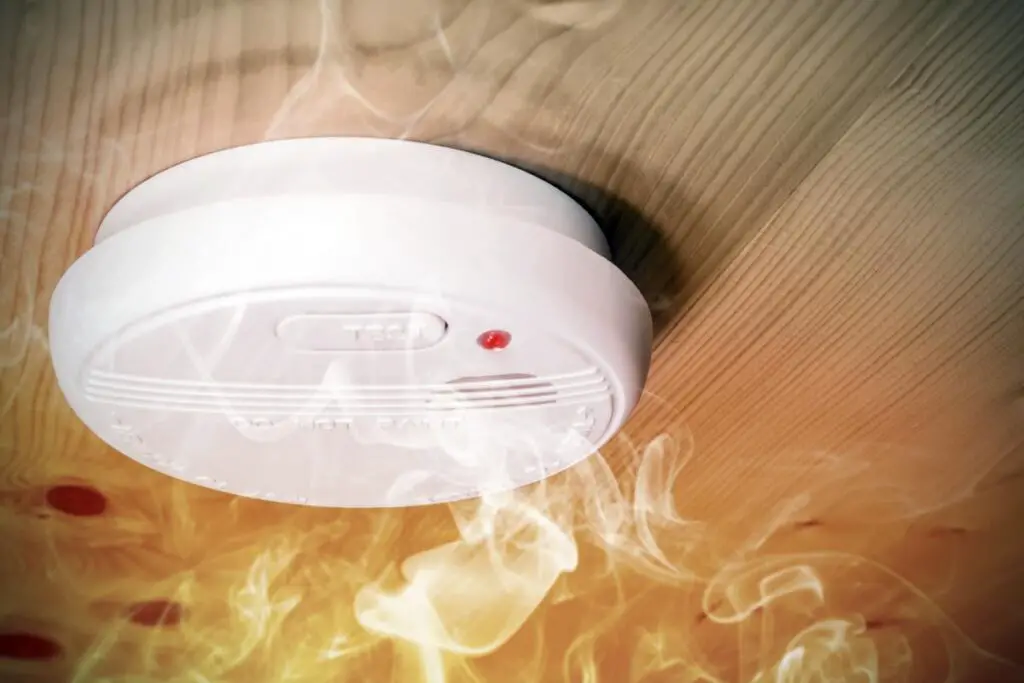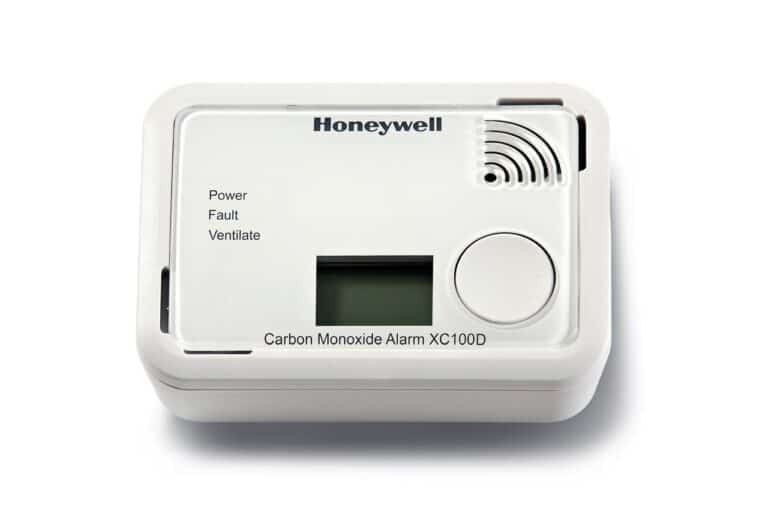Introduction
Where to install a carbon monoxide detector: The importance of safeguarding against invisible threats cannot be overstated. Carbon monoxide, a colorless and odorless gas, poses a significant danger due to its potential to cause severe health issues or even prove fatal if undetected. To mitigate this risk, the installation of carbon monoxide detectors is a critical step. These devices act as vigilant guardians, alerting us to the presence of this silent but hazardous gas. In this guide, we will delve into the key considerations for strategically placing carbon monoxide detectors throughout your living spaces. By understanding optimal installation locations and factors that can affect their performance, you can take proactive measures to ensure the safety and well-being of your household.
In our modern lives, where comfort and security go hand in hand, the invisible threats that surround us demand our attention. Among these, carbon monoxide emerges as a potent danger, lurking undetected due to its odorless and colorless nature. Safeguarding our homes against this insidious gas requires a proactive approach, and this begins with the installation of carbon monoxide detectors. These vigilant devices stand as silent sentinels, poised to raise the alarm at the slightest hint of this deadly gas.
This comprehensive guide aims to illuminate the optimal positions for placing carbon monoxide detectors within your living spaces. By delving into the nuances of installation locations and understanding the variables that can influence their effectiveness, you can empower yourself to fortify your home’s safety measures. As we embark on this journey of knowledge, you will equip yourself with the tools needed to prioritize the well-being and security of your cherished household.

Where should you install carbon monoxide detectors?
The International Association of Fire Chiefs recommends a carbon monoxide detector on every floor of your home, including the basement. A detector should be located within 10 feet of each bedroom door and there should be one near or over any attached garage. Each detector should be replaced every five to six years.
Near Sleeping Areas
Place a carbon monoxide detector in close proximity to sleeping areas, such as hallways outside bedrooms. During sleep, individuals are less likely to notice symptoms of CO poisoning, making this an essential location for detection.
On Every Floor
Install at least one carbon monoxide detector on every floor of your home, including the basement. CO can rise or accumulate in lower areas, so having detectors on each level ensures comprehensive coverage.
Near Fuel-Burning Appliances
Position a detector near fuel-burning appliances like furnaces, water heaters, and stoves. These appliances are potential sources of carbon monoxide leaks. Mount the detector at a distance of 5 to 15 feet from the appliance to avoid false alarms caused by normal combustion.
How is a carbon monoxide detector installed?
Where and how to install a carbon monoxide (CO) detector …
Secure the detector above any door or window, but at least 15 cm from the ceiling. If there is a partition in the room, the detector should be installed on the same side as the potential source of carbon monoxide.
Choose the Right Detector
Select a carbon monoxide detector that suits your needs. There are various types available, including battery-operated, plug-in, and hardwired models. Choose a detector with reliable certifications, such as UL (Underwriters Laboratories) certification, which ensures the product meets safety standards.
Read the Manufacturer’s Instructions
Before beginning installation, thoroughly read the manufacturer’s instructions provided with the detector. These instructions will provide specific guidance on placement, maintenance, and testing.
Determine Installation Locations
Identify key locations for installing the detector. Refer to the previous guide on where to place carbon monoxide detectors for optimal placement.
Where should a battery operated carbon monoxide detector be placed?
Install at least one CO detector on each level of your home. Make sure you don’t forget about the basement or attic if you have one. Place CO detectors high on the wall or on the ceiling. However, when installing a battery-powered alarm, place it a few feet down the wall from the ceiling, not on the ceiling.
ear Sleeping Areas:Install a battery-operated carbon monoxide detector near each sleeping area in your home. This placement is critical because CO poisoning can be particularly dangerous when people are asleep and less likely to notice the symptoms.
On Every Floor:Place at least one detector on every floor of your home, including the basement. CO gas can rise or disperse, so having detectors on each level helps ensure that no area is left vulnerable to this invisible danger.
Within 10-15 Feet of Fuel-Burning Appliances:Position a detector within 10-15 feet of fuel-burning appliances such as furnaces, water heaters, stoves, and fireplaces. These devices have the potential to emit CO gas, and placing detectors in close proximity ensures rapid detection.
Common Living Areas:Install detectors in commonly used living spaces such as living rooms, family rooms, and dens. These areas are often occupied for extended periods, making them important locations for early CO gas detection.
Do you need carbon monoxide detector in every room?
Ideally, you should have carbon monoxide detectors placed throughout your home, as you do smoke alarms. You should place a CO detector in each major area of your home: in the kitchen, in your living/dining room, in your bedrooms, and the office.
Avoiding Overcrowding
While comprehensive coverage is crucial, installing detectors in every single room might lead to overcrowding and may not necessarily enhance safety. CO gas disperses relatively evenly throughout the home, and well-placed detectors in key areas can provide effective protection.
Kitchens and Bathrooms:
It’s generally not recommended to place carbon monoxide detectors in kitchens or bathrooms. These areas can experience temperature and humidity fluctuations that might trigger false alarms. Focus on locations outside these areas that are still adjacent to them.
Professional Recommendations:
Local regulations and guidelines may vary. It’s advisable to check with your local authorities or fire department for any specific requirements or recommendations for carbon monoxide detector placement.
Regular Maintenance:
No matter the number of detectors you have or their placement, regular maintenance is essential. Test your detectors monthly, change the batteries at least once a year, and replace the detectors according to the manufacturer’s recommendations (usually every 5-7 years).
Multi-Function Detectors:
Consider multi-function detectors that combine smoke and carbon monoxide detection. These can offer added convenience and coverage in various rooms.
Where does carbon monoxide come from in house?
The most common causes of carbon monoxide building up are incorrectly installed or poorly maintained or ventilated appliances – like stoves and hot water heaters. Poorly ventilated fireplaces and other gas- or wood-burning appliances can also pose danger.
Attached Garages
Running vehicles in an attached garage, even with the garage door open, can introduce carbon monoxide into your living spaces. The gas can seep into your home through openings or ventilation systems.
Blocked or Poorly Vented Chimneys and Flues
Blocked chimneys or flues can lead to improper ventilation, causing the buildup of carbon monoxide indoors.
Cracked or Damaged Heat Exchangers
In a malfunctioning furnace, cracks or damage in the heat exchanger can allow carbon monoxide to escape into the air being circulated throughout your home.
Poorly Maintained Ventilation Systems
Ventilation systems, including chimneys, vents, and exhaust fans, need regular maintenance to ensure proper functioning. Any obstruction or damage can lead to carbon monoxide accumulation.
How do I know if I need a carbon monoxide detector?
The Consumer Product Safety Commission recommends a detector on each floor of a residence. At a minimum, a single detector should be placed on each sleeping floor with an additional detector in the area of any major gas burning appliances such as a furnace or water heater.
Fuel-Burning Appliances:If your home is equipped with fuel-burning appliances such as gas stoves, ovens, water heaters, furnaces, fireplaces, or wood-burning stoves, the need for a carbon monoxide detector is significantly heightened. These appliances can potentially produce carbon monoxide if not properly maintained or vented.
Attached Garage:Having an attached garage where you park vehicles that run on gasoline, diesel, or any other fuel can introduce carbon monoxide into your living spaces. Even with the garage door open, the gas can seep through openings and pose a threat.
Gas-Powered Generators:If you have gas-powered generators that you use indoors or in enclosed spaces, such as during power outages, a carbon monoxide detector is essential. These generators can produce significant amounts of carbon monoxide if not used safely.
When should a CO detector be installed?
It is strongly recommended for all occupied homes to have carbon monoxide detectors installed. It is especially important for homes with equipment like furnaces, stoves, generators, and gas water heaters to install carbon monoxide detectors to help prevent carbon monoxide poisoning.
Upon Purchase of Fuel-Burning Appliances:If you’ve recently acquired fuel-burning appliances such as gas stoves, ovens, water heaters, furnaces, fireplaces, or wood-burning stoves, install carbon monoxide detectors immediately. These appliances can potentially produce carbon monoxide if not maintained or vented properly.
After Renovations or Home Improvements:If you’ve recently completed renovations or home improvements that involve changes to ventilation systems, chimneys, or fuel-burning appliances, it’s a wise idea to install carbon monoxide detectors. Alterations to these systems can impact the proper venting of combustion gases.
Before Seasonal Use:Before the onset of colder months when heating systems are frequently used, ensure that carbon monoxide detectors are in place and functioning properly. This is especially important if you’re using fuel-burning heating methods.
When should a carbon monoxide detector be installed?
Keep safe from the Silent Killer. All landlords are recommended to fit carbon monoxide alarms in any room where there is a gas or fuel burning appliance. Not only will this protect tenants from CO poisoning, but it also safeguards and future proofs landlords against potential changes in legislation.
New Home Move-In:If you’re moving into a new home, whether you’re a homeowner or a renter, prioritize the installation of carbon monoxide detectors as part of your move-in process. This is a prime opportunity to establish a foundation of safety for your household.
Acquisition of Fuel-Burning Appliances:Immediately upon obtaining fuel-burning appliances like gas stoves, ovens, water heaters, furnaces, fireplaces, or wood-burning stoves, install carbon monoxide detectors. These appliances can potentially produce carbon monoxide if not properly maintained or vented.
Post-Home Improvements:After completing renovations or home improvements that involve changes to ventilation systems, chimneys, or fuel-burning appliances, install carbon monoxide detectors. Alterations to these systems can impact the proper venting of combustion gases.
Before Seasonal Use:In preparation for colder months when heating systems are frequently in use, ensure that carbon monoxide detectors are installed and functioning effectively. This is especially crucial if you’re utilizing fuel-burning heating methods.

Conclusion
Safeguarding our homes demands meticulous planning and a deep understanding of potential risks. Carbon monoxide, though elusive in its presence, can have profound and devastating effects on our health and safety. Through our journey, we’ve unraveled the significance of strategically placing carbon monoxide detectors throughout our living spaces.By heeding the guidance provided in this guide, you’ve equipped yourself with the knowledge to effectively mitigate the threat of carbon monoxide. Remember that high-risk areas such as living near fuel-burning appliances or in close proximity to garages should be prioritized for detector placement.
Ensuring proper airflow and avoiding obstructions will guarantee accurate readings, while periodic maintenance will uphold the functionality of these crucial devices. Ultimately, the installation of carbon monoxide detectors is not merely a task; it’s an investment in the well-being of you and your loved ones. By placing these sentinels in the right locations, you’re taking an active step towards creating a safe haven, where the invisible dangers are brought to light and neutralized. Your dedication to home safety is an embodiment of care and responsibility that reverberates through the walls of your cherished abode.
These devices are not just silent sentinels; they are vigilant protectors, ready to sound the alarm at the first sign of danger.With a firm grasp on the optimal locations and the factors influencing their effectiveness, you’ve gained the knowledge to take charge of your home’s safety. Your commitment to installing and maintaining carbon monoxide detectors is a testament to your dedication to your family’s well-being. By embracing these practices, you are fortifying your home against the unseen threat of carbon monoxide, transforming it into a haven of security and tranquility for all who dwell within its walls.

